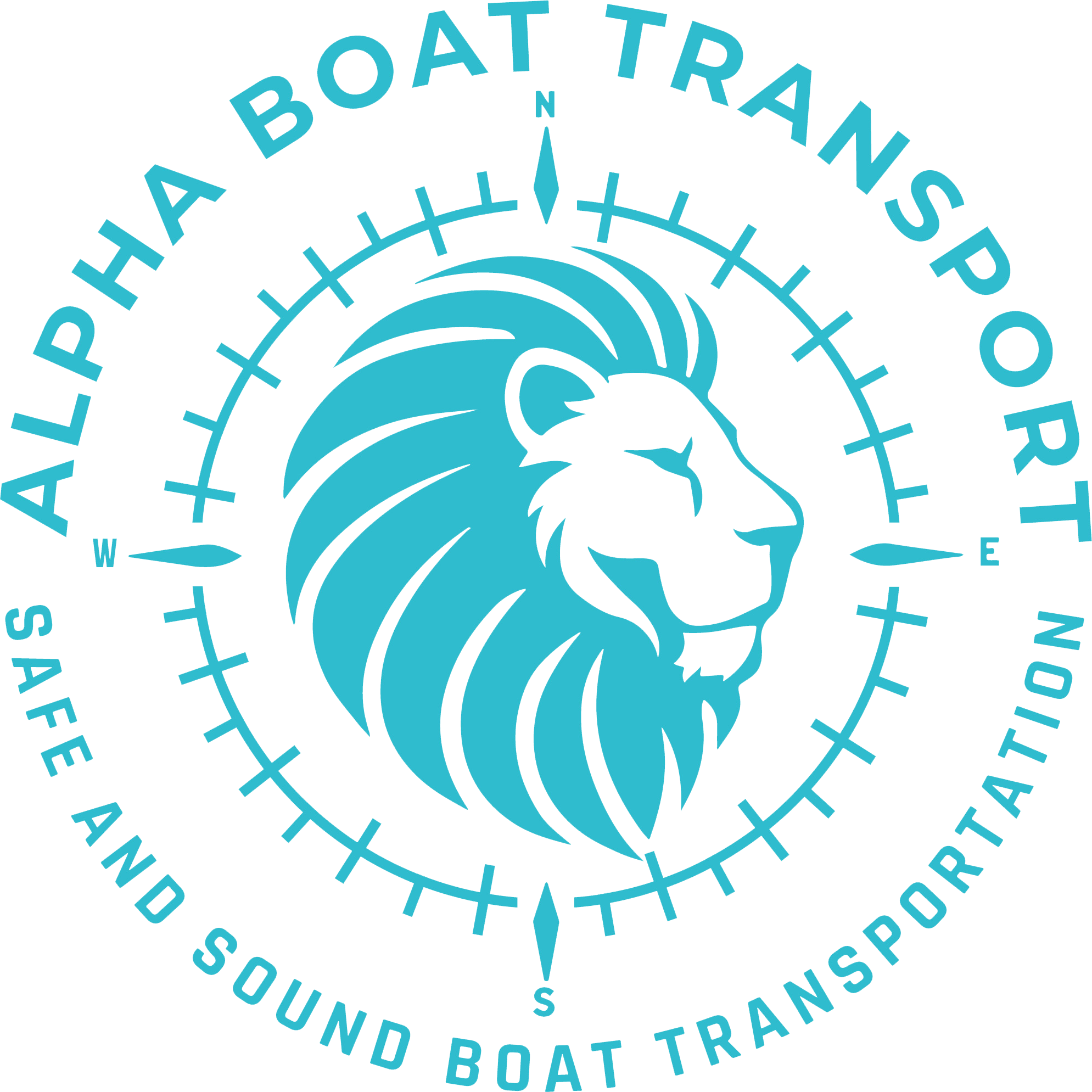Yacht Transport
- Home
- |
- Yacht Transport
Yacht Transport Preparation Guide
Transporting a small or large yacht requires very careful and detailed preparation to ensure it arrives safely and in excellent condition. This guide provides the important steps to prepare your yacht for transport, ensuring a smooth and safe and sound journey.
At Alpha Boat Transport we spend the time on the details to make sure that your prize possession is taken care of. We ship all types of yachts including Motor Yacht Transport, Sailing Yachts, Expedition Yachts, Sportfishing Yachts, Luxury Mega Yacht Transport, Super Yachts, Pocket Yachts, Performance Yachts, Classic Yachts, Explorer Yachts, Flybridge Yachts, Downeast Yachts and more.
1. General Preparation Tips
Documentation
- Complete all necessary paperwork, including transport agreements and insurance documentation.
- Keep a copy of your yacht’s registration, survey reports, and any required permits handy.
Cleaning
- Thoroughly clean the exterior and interior of your yacht to prevent the spread of invasive species and to make inspection easier.
- Remove any barnacles or algae from the hull.
Inspection
- Conduct a detailed inspection of your yacht, noting any existing damage. Take comprehensive photos for your records.
- Check for any loose items that need to be secured.
2. Securing the Interior
Remove Personal Items
- Remove all personal items, valuables, and equipment from the yacht.
- Secure any loose items that cannot be removed.
Lock Cabinets and Doors
- Ensure all cabinets, doors, and windows are locked and secured.
- Use padding to protect fragile items and interiors.
Disconnect Electronics
- Disconnect and securely store electronic devices and batteries.
- Ensure all electrical systems are turned off.
3. Preparing the Exterior
Secure Loose Parts
- Remove and securely store any detachable parts, such as antennas, satellite dishes, and other protruding items.
- Ensure all hatches, ports, and covers are tightly secured.
Protect the Hull
- Use protective covers or shrink wrap to shield the hull from road debris and weather conditions during transport.
- Ensure the hull is properly supported and cushioned to prevent stress points.
4. Mast and Rigging (for Sailing Yachts)
Unstep the Mast
- Unstep (remove) the mast and secure it properly for transport. Use padding and protective covers to prevent damage.
- Label all stays, shrouds, and other rigging components for easy reassembly.
Secure Rigging
- Coil and secure all rigging lines to avoid tangling and potential damage.
- Remove and store any electronics or lights attached to the mast.
5. Engine and Fuel System
Drain Fuel and Water Systems
- Drain the fuel tank to a quarter full to reduce weight and risk.
- Drain water tanks and water lines to prevent freezing and leaks.
Secure the Engine
- Secure the engine to prevent movement during transport.
- Check and secure all engine mounts, brackets, and attachments.
6. Trailer and Transport Preparation
Inspect the Trailer
- Ensure the trailer is in excellent condition, with no rust or damage.
- Check the tires for proper inflation and tread.
Check the Brakes and Lights
- Test the trailer brakes to ensure they are functioning properly.
- Verify that all trailer lights, including brake lights and turn signals, are operational.
Secure the Yacht to the Trailer
- Use high-quality straps and tie-downs to secure the yacht to the trailer. Ensure it is centered and balanced to prevent shifting during transport.
7. Additional Preparations
Cover and Protect
- Use a boat cover or shrink wrap to protect the yacht from environmental factors and road debris.
- Ensure the cover is securely fastened to avoid damage during transport.
Reduce Wind Resistance
- Lower or secure any items that could create wind resistance, such as the bimini top, radar arch, or satellite dishes.
- Ensure all items are securely fastened to prevent movement.
8. Final Checks
Review Transport Route
- Confirm the transport route with your transport company to ensure it accommodates your yacht’s size and dimensions.
- Check for any low bridges, weight restrictions, or other potential obstacles.
Communication
- Maintain open communication with the transport company for updates and instructions.
- Provide clear instructions for pick-up and delivery locations.
9. Post-Transport Inspection
Inspect for Damage
- Once the yacht arrives, conduct a thorough inspection to check for any damage that may have occurred during transport.
- Compare the yacht’s condition to the pre-transport photos and documentation.
Reassemble and Reconnect
- Reattach any removed items, such as the mast, rigging, and electronics.
- Reconnect the battery and check all systems before using the yacht.
By following these preparation steps, you can ensure that your yacht is ready for transport. This will help protect your investment and ensure a smooth, secure, and stress-free transport experience with Alpha Boat Transport. We look forward to servicing you!

